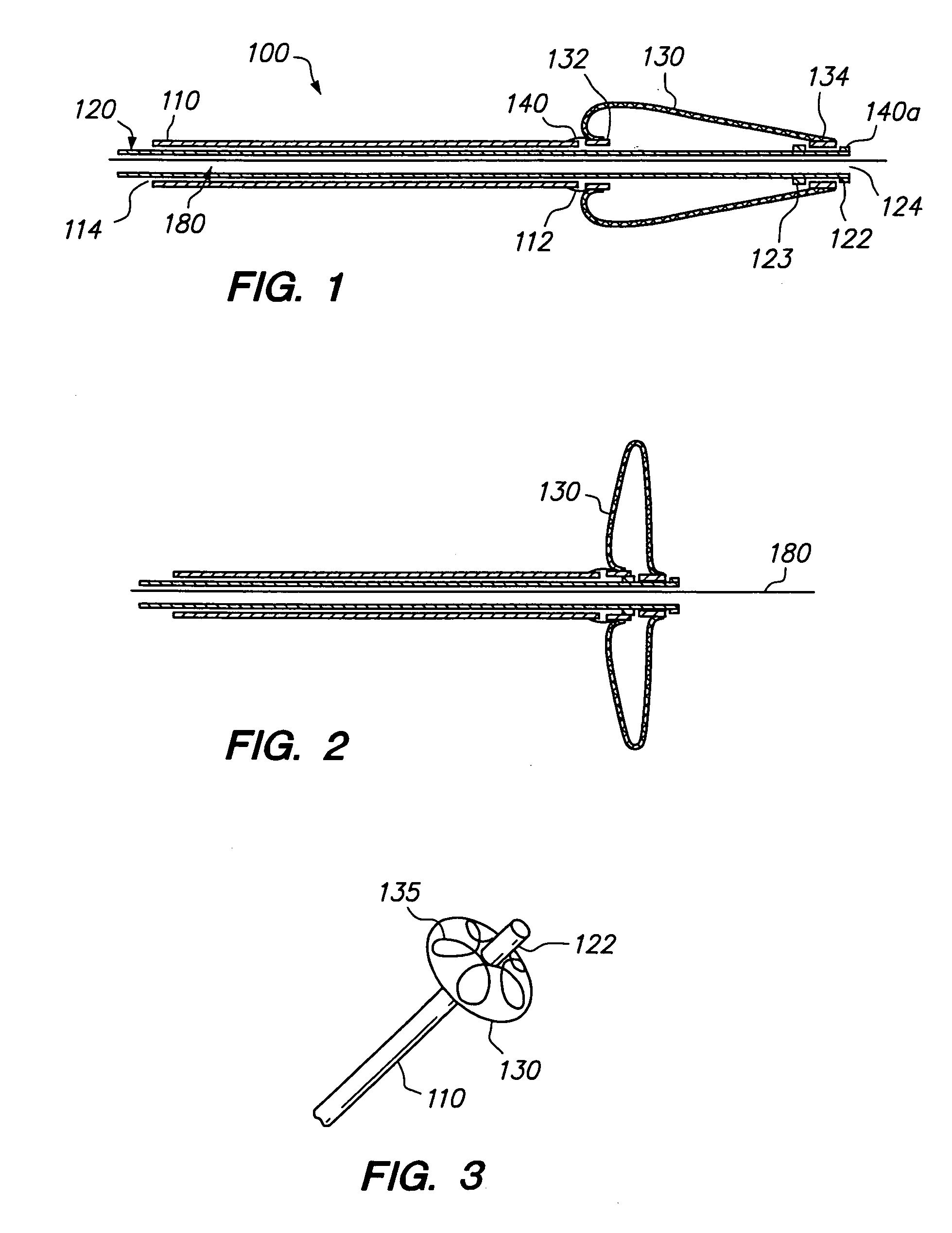Occlusive cinching devices and methods of use
a technology of occlusion and orifice, which is applied in the field of occlusion cinching devices and methods of use, can solve the problems of permanent and irreversible occlusion of parent arteries, disadvantages of injection of these types of embolic materials, and trauma to patients, so as to prevent the egress of embolic materials
- Summary
- Abstract
- Description
- Claims
- Application Information
AI Technical Summary
Benefits of technology
Problems solved by technology
Method used
Image
Examples
Embodiment Construction
[0023]Before the present invention is described in detail, it is to be understood that this invention is not limited to the particular methodology, devices or apparatuses described, as such methods, devices or apparatuses can, of course, vary. It is also to be understood that the terminology used herein is for the purpose of describing particular embodiments only, and is not intended to limit the scope of the present invention.
[0024]Use of the singular forms “a,”“an,” and “the” include plural references unless the context clearly dictates otherwise. Thus, for example, reference to “an embolic” includes a plurality of embolics, reference to “a locking mechanism” includes a plurality of such mechanisms, and the like.
[0025]Terms such as “connected,”“attached,”“linked,” and “conjugated” are used interchangeably herein and encompass direct as well as indirect connection, attachment, linkage or conjugation unless the context clearly dictates otherwise.
[0026]Unless defined otherwise or the...
PUM
 Login to View More
Login to View More Abstract
Description
Claims
Application Information
 Login to View More
Login to View More - R&D
- Intellectual Property
- Life Sciences
- Materials
- Tech Scout
- Unparalleled Data Quality
- Higher Quality Content
- 60% Fewer Hallucinations
Browse by: Latest US Patents, China's latest patents, Technical Efficacy Thesaurus, Application Domain, Technology Topic, Popular Technical Reports.
© 2025 PatSnap. All rights reserved.Legal|Privacy policy|Modern Slavery Act Transparency Statement|Sitemap|About US| Contact US: help@patsnap.com



